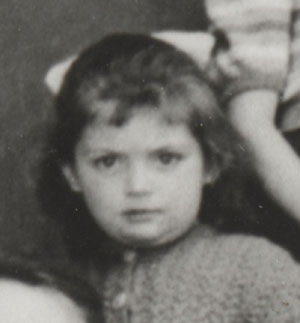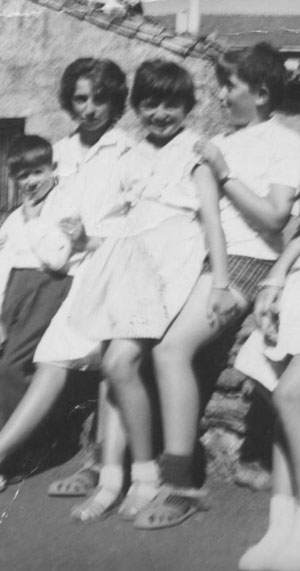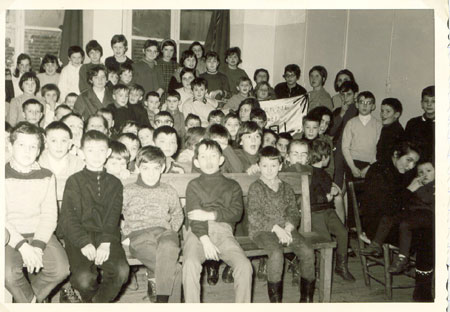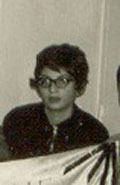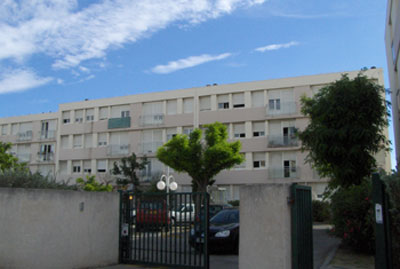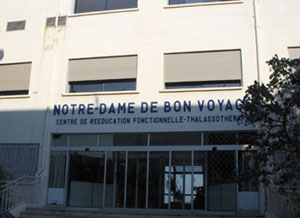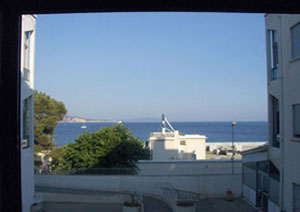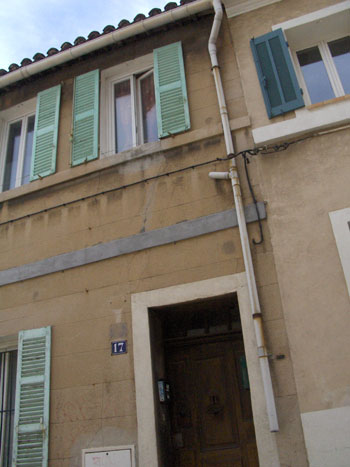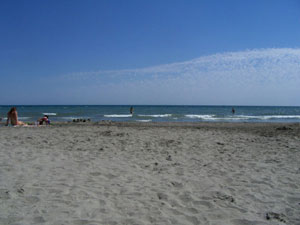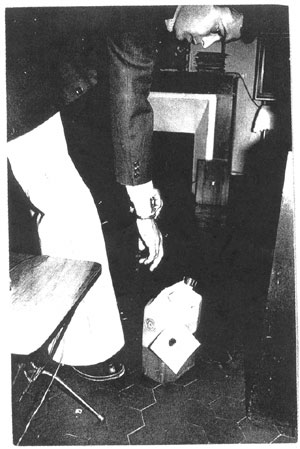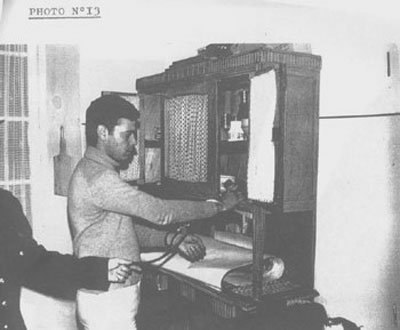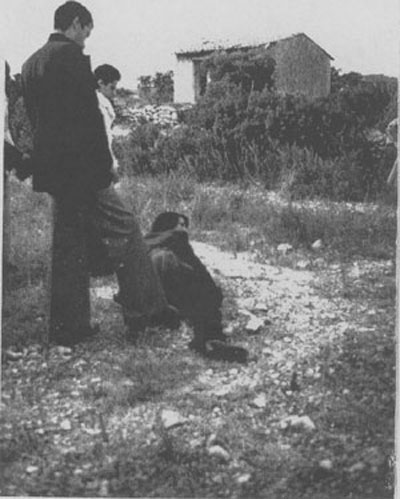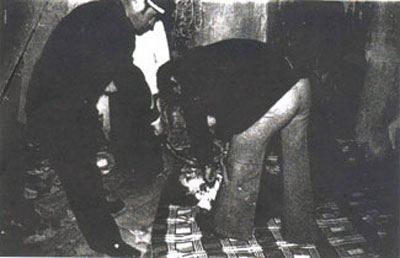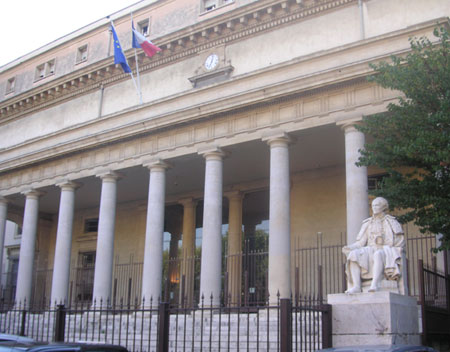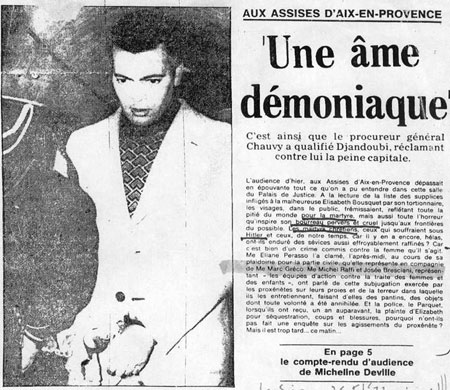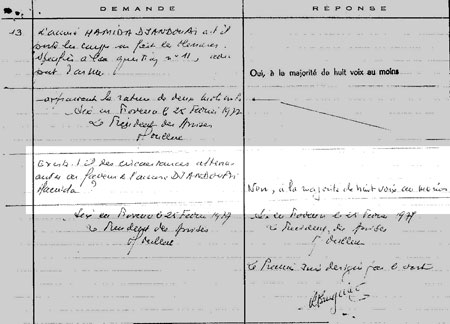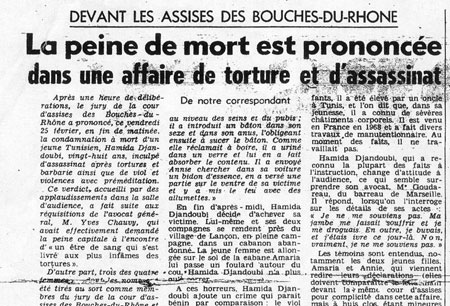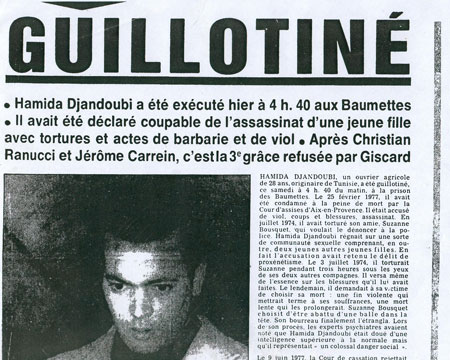Ancillary Material for Guillotine
A snapshot of Hamida Djandoubi at the engagement party of his close friend Louis Bugia. This photograph was taken just weeks before the tractor accident that changed his life. The young woman with him was one of his many girlfriends.
Another photograph of Hamida out with some friends at a seaside amusement park in the south end of Marseille.
A childhood photograph of Elisabeth Bousquet who would go on to become Hamida’s girlfriend and then victim.
Elisabeth Bousquet with her family in Langogne, the village where she was raised.
Elisabeth’s final class picture from the village school in Langogne. The next year, she would be in Marseille and she would quit school. She would eventually take a job as a baby sitter and cleaning woman for two physiotherapists.
The Sonacotra, a men’s residence, where Hamida lived before and after his accident. It was here that Elisabeth came looking for him the day of the murder.
This is the rehabilitation center where Hamida stayed after his amputation. It’s a 40 minute drive away from Marseille in the town of La Ciotat.
The center has amazing postcard views of the Mediterranean Sea. Soothing, you’d think, but Hamida was in such dire shape he flew into rages and attacked a fellow patient and a nurse.
The building where Hamida lived. He was able to rent the apartment once he received his disability pension. He lived in this apartment with his two 15-year-old girlfriends. It was also here that he tortured Elisabeth for three or four hours.
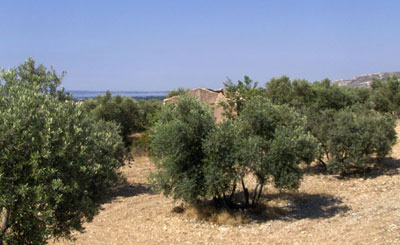 The abandoned cabin where Hamida brought Elisabeth to die. With the olive trees and the distant waters of the Etang de Berre, it was a tranquil setting for such a horrific death.
The abandoned cabin where Hamida brought Elisabeth to die. With the olive trees and the distant waters of the Etang de Berre, it was a tranquil setting for such a horrific death.
The cabin itself. It was built in the 19th century as an overnight shelter for workers in the field but has been abandoned for decades.
After the murder, Hamida went to the resort town of Saintes Maries de la Mer to relax. He camped on this beach, which at the time was home to a large nudist colony. Hamida liked to watch.
 The first newspaper article announcing the discovery of the body in the cabin.
The first newspaper article announcing the discovery of the body in the cabin.
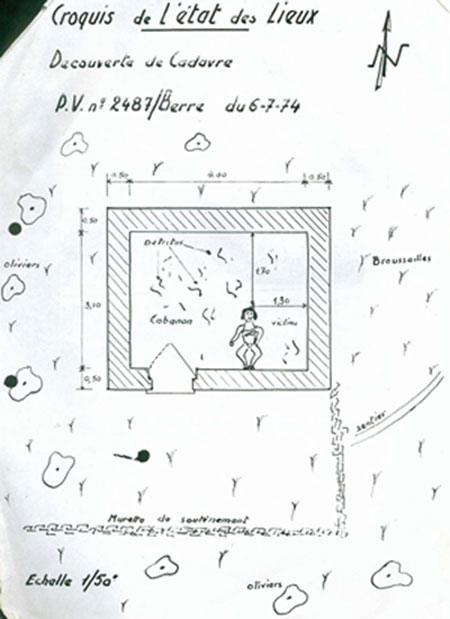 This is the sketch of the crime scene done the afternoon the body was found. There are also photographs of the crime scene but out of respect for Elisabeth and her family, those remain unpublished.
This is the sketch of the crime scene done the afternoon the body was found. There are also photographs of the crime scene but out of respect for Elisabeth and her family, those remain unpublished.
Hamida’s arrest was front-page news in Marseille. Police staked out his apartment while he was at the social services office applying for welfare.
Hamida’s confession. The key passage reads:
 ‘I put the scarf around her neck and she didn’t struggle when I began to choke her … I choked her for a few minutes and then I asked for the flashlight so I could make sure she was really dead. At one point, for reasons I can’t really explain, I kicked the girl’s nose but she didn’t move.’
‘I put the scarf around her neck and she didn’t struggle when I began to choke her … I choked her for a few minutes and then I asked for the flashlight so I could make sure she was really dead. At one point, for reasons I can’t really explain, I kicked the girl’s nose but she didn’t move.’
After his confession, Hamida agreed to reenact the crime. The reenactent took place in November 1974. A secretary from the police headquarters played the role of Elisabeth.
In this scene, Hamida is reaching for the gasoline which he would use to torture Elisabeth.
As a young boy, Hamida’s mother punished him by forcing harissa, the hot Tunisan pepper saucen, into his rectum. As an adult, this became one of his preferred torture techniques. Here, in the police reconstruction of the crime, he can be seen reaching for the tin of harissa on the kitchen shelf.
Here, Hamida shows how he kicked Elisabeth along the dirt path that leads to the cabin where he killed her. This photograph is taken in the afternoon, but in fact the murder took place at night. Also, you can see that 35 years ago there was a roof on the cabin.
And, finally, the murder. One must applaud the nerve of the police secretary (Nadine Pache) for enduring this simulated murder and the sensation of having Hamida hover above her. Three decades later, when visiting the cabin, I lay down in the place where the murder occurred and I felt such a surge of panic and oppression that I got up after a few seconds …
The courthouse in Aix-en-Provence where the trial was held. The metal fence wasn’t there in 1977; in its place, picture a crowd of about 100 gawkers and curiousity seekers hoping to get seat in the courtroom on the morning of the trial.
The trial coverage was decidedly sensational. There is no plea bargaining in the French system, so his lawyer wasn’t able to negotiate a reduced sentence in exchange for the confession. This meant the trail was really only to determine the sentence – death or life imprisonment. And the fact that he had already confessed allowed journalists to open fire. Some actually compared him to Hitler.
Despite the fact that Hamida had confessed to the crime, 13 questions were nonetheless put to the jury. The first twelve asked them to decide whether he had killed Elisabeth, whether he had tortured her, and similar chargees. The answers to these could only be yes. The crucial question was the 13th, asking whether the jury found any extenuating circumstances. If they answered yes, it meant the death penalty could not be applied. They answered no.
The death verdict meant the Djandoubi case became national news. The following day, lengthy articles appeared in both Le Figaro and Le Monde (pictured above). At the time France was clenched in the debate over abolition and every death sentence became a political issue.
The official letter of death from President Valéry Giscard-d’Estaing announcing that Djandoubi’s request for grace had been rejected. Note that the letter was sent by courrier on September 9th and orders an execution for the following morning. Unlike the American process which can see appeals drag out for years or decades, in France it was lightening quick: the verdict was delivered in February 1977, the appeals court refused to order a retrial in June 1977, the president heard the requerst for grace in August 1977 , and the guillotine fell on September 10th, 1977. Seven months from verdict to death.
By the late 1970s, the guillotine was being used less than once a year. Which meant bold, front page headlines when a criminal’s head was cut off.


